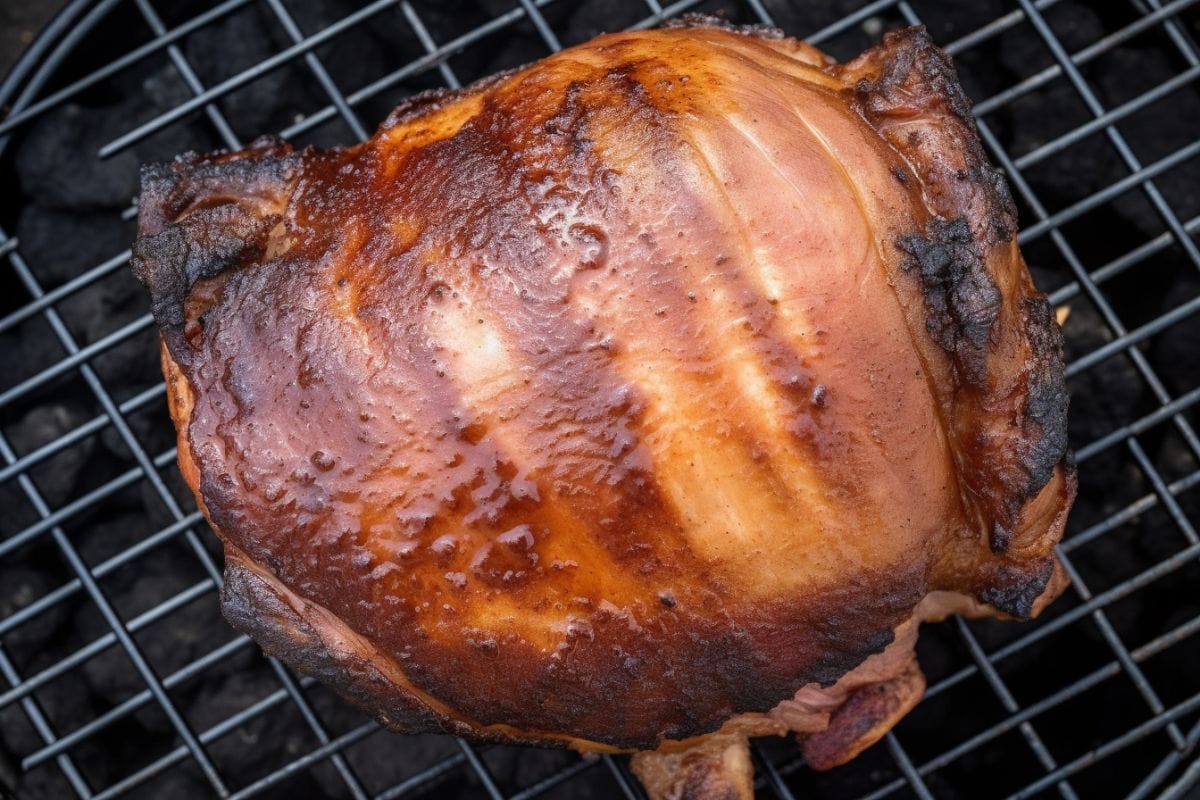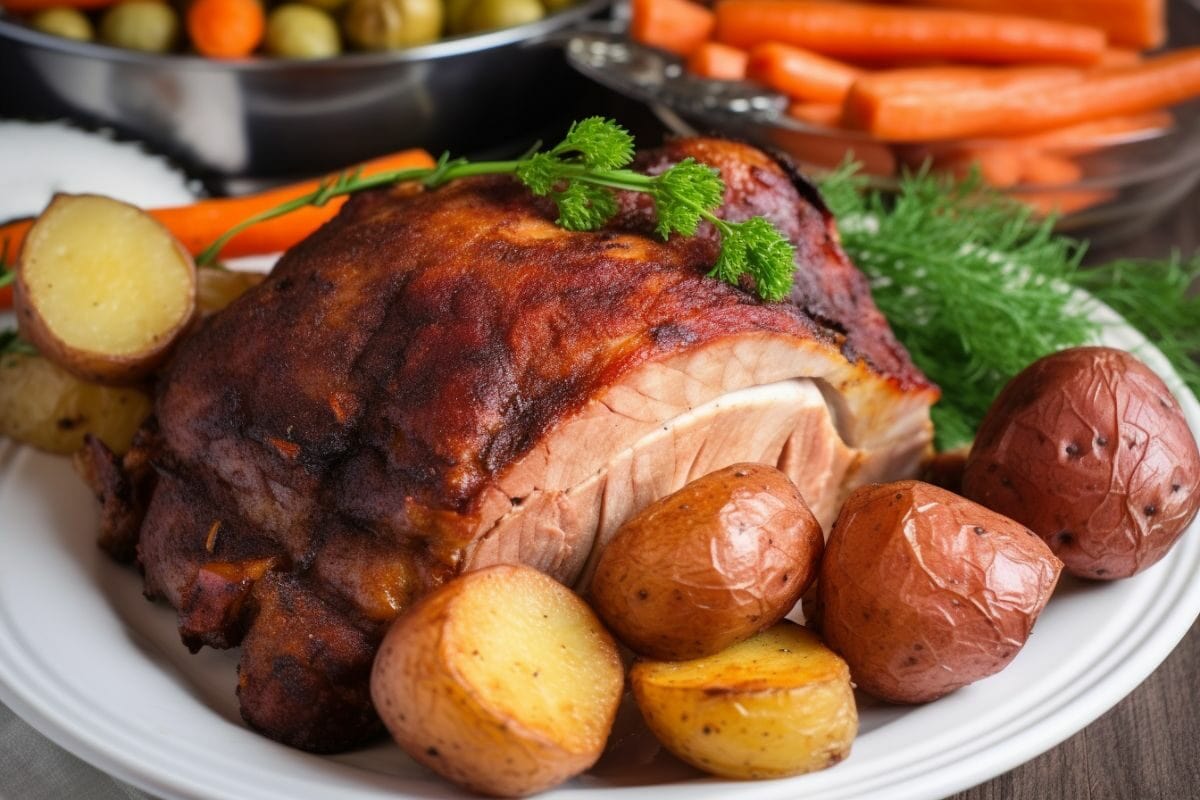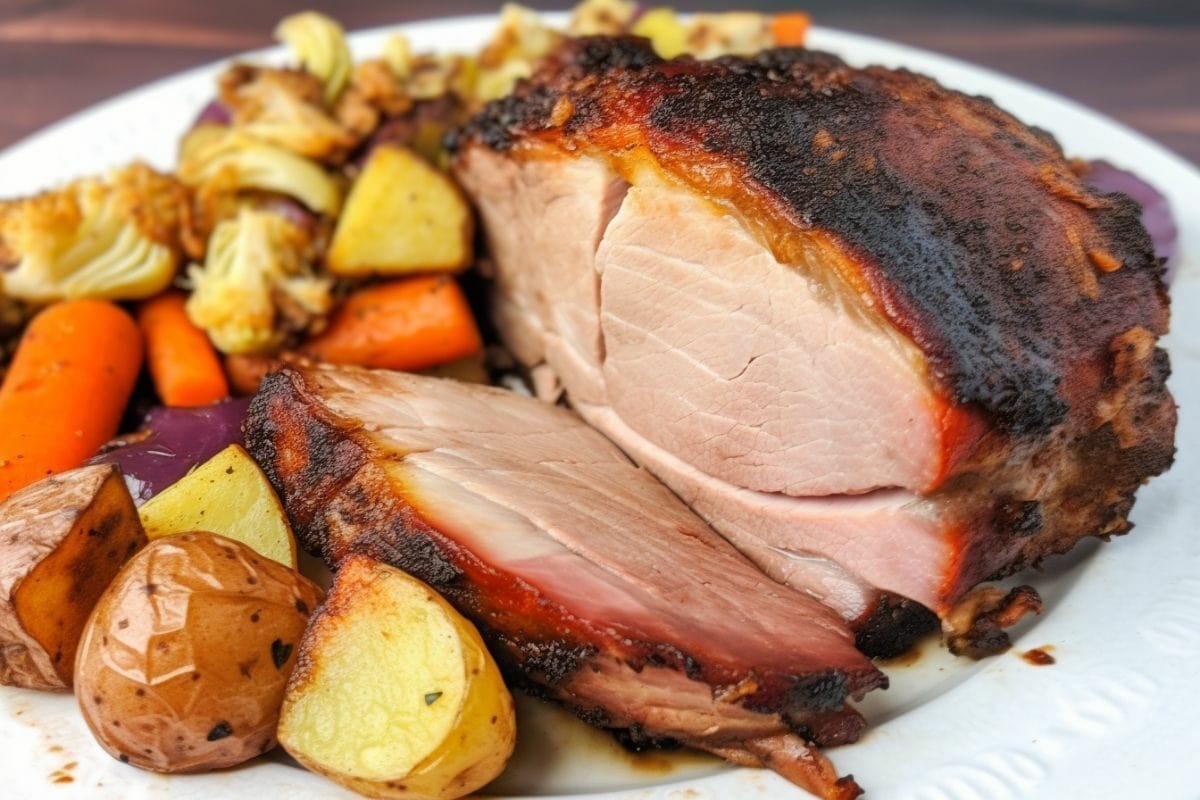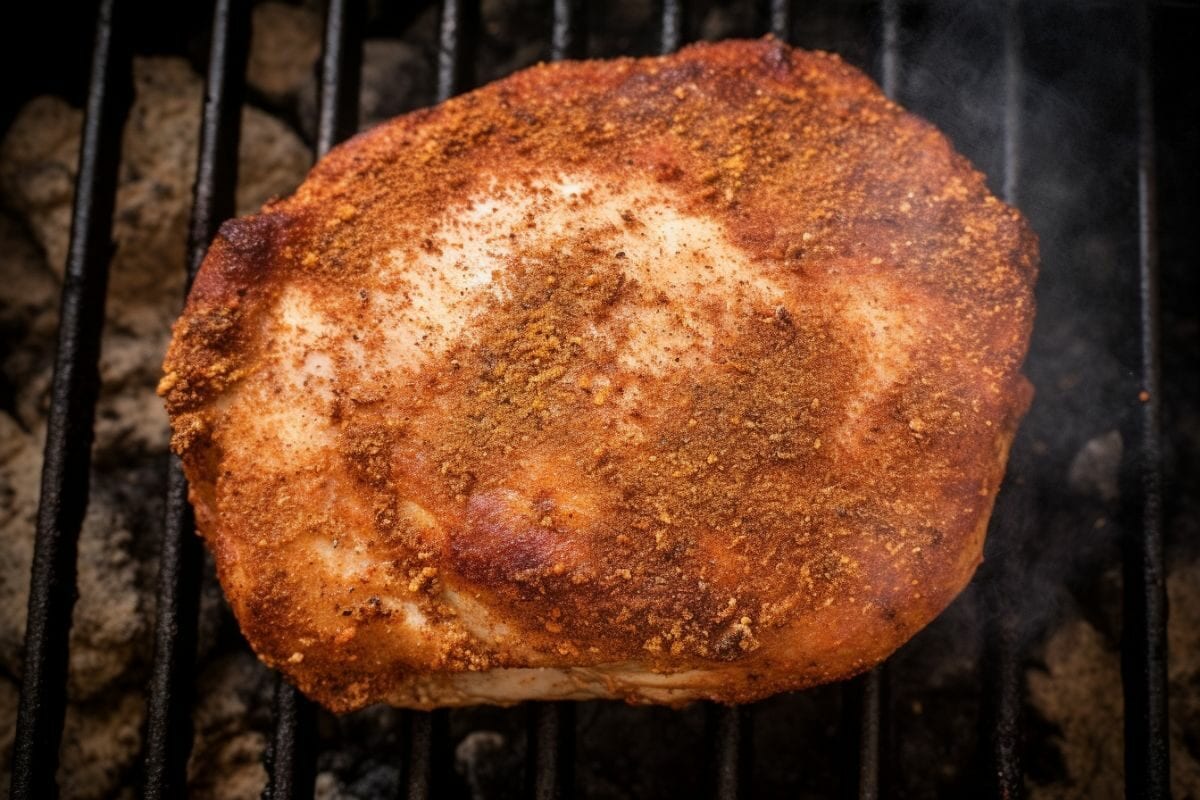The stall is when you’re smoking a large cut of meat, and the meat remains at the same temperature for hours. The stall happens at a temperature range between 150°F and 170°F and can drive new cooks crazy.
Throughout my career as a chef, I’ve had the opportunity to work with many pitmasters. One point that they really helped me with is overcoming the dreaded stall. And now I’m passing this wisdom on! If you need to speed up your cook or want pulled pork that’s ultra-tender, I’ll show you how to make that happen.
In this post, I will explain why and when the stall happens as well as how to push past it, using either the “Texas crutch” or higher cooking temperatures. Let’s get grilling!

The stall occurs because of a process known as evaporative cooling. As the meat cooks, it begins to “sweat” – release liquid. These juices cool the surface of the pork, causing the surface temperature to drop in temperature. The interior temperature of the meat stops climbing and can drop a few degrees sometimes. Fear not! Keep reading for solutions to the stall.
The stall can be frustrating to experience, particularly if you’re new to ‘que, and didn’t know your temperature readings were going to flatline. It can take hours (up to 6) before the internal temp eventually begins to rise again.
So, the main issue with the stall is that it can add many hours to your overall cooking time.
By the way, it’s not just pork butt that’s prone to stalling. Other large cuts of meat, like pork shoulder and beef brisket, are known to hit a stall.
Some pitmasters will argue that the stall happens due to protein denaturing during the fat-rendering process. Others claim that collagen in the meat binds with water to form gelatin, which causes the stall. If a fellow pitmaster goes off about collagen or protein denaturing, please set them straight (politely)! The stall happens because of evaporative cooling. Full stop.
So, if you do want to overcome the pork butt stall, you have to address the evaporative cooling issue.

The stall typically takes place around 160°F, although it can happen at any temperature between 150°F and 170°F.
For a 10-pound Boston butt cooked at 250°F, expect evaporative cooling to begin at around 5 hours into the cooking process. There are many variables, though, that impact how long it takes before the stall begins. (I’ll dive into every factor in a bit.)
One variable is the size and weight of the pork shoulder. Bigger cuts will take longer to reach stall temperatures. The cooking temperature of the grill or smoker comes into play here as well. If you smoke pork butt at temperatures over 300°F (I usually don’t), you may experience no stall at all.
If the meat’s internal temperature hasn’t risen in half an hour or so, and you’re in the 150°F to 170°F zone, you can assume that the stall has set in.
Related Reading
Or I’m asked this as a rephrased, “How long does pork butt stall at 160°F?”
There are a ton of factors, which I’ll discuss, but the stall usually lasts anywhere from 2-6 hours with pork butt.
Pork butt has quite a bit of marbling and fat on it. This all contributes to moisture in the meat. Thus, the evaporation process can take quite a while, causing a longer stall.
It is possible for the stall to last as long as 6 hours. If you’ve hit the stall and you want to push past it, I’ve got some tips and tricks to speed things up.
Here are some elements that can impact the rate at which the stall sets in:
As you can imagine, the size of the meat matters a great deal. Large cuts take longer to cook, which means they take longer to reach the stall. Smaller cuts of meat tend to be stuck at stall temperatures for a shorter time.
Humidity is a huge factor that impacts the stall. Higher humidity means more moisture in the air, and therefore less evaporative cooling. High humidity means a shorter stall, while low humidity means a longer one.
How air flows through your cooker also plays into stall length. The greater the airflow, the shorter the stall.
The kind of smoker that you are using can matter as well. For instance, electric smokers are tightly sealed and smoke the meat in a humid environment. Smoke a pork butt in an electric smoker, and you may not even experience a stall.
Pellet smokers are all the rage these days because they’re set it and forget it. While they don’t crank out as much smokey flavor as a bullet smoker or offset smoker, they have an advantage – a fan. That fan convection cooks things, pushing air past what’s getting cooked, and shortens the stall.

The good news for you is that pitmasters before you have already brainstormed this idea and come up with a solution: the Texas Crutch.
Once the meat’s internal temperature stops climbing, the meat is wrapped tightly in foil or butcher paper. This creates an environment in which the moisture is trapped. It cannot evaporate and cool the meat. So, the meat passes the stall, and the temperature resumes climbing. Using the Texas crutch can cut hours off of your cook.
The meat is unwrapped when it is cooked all the way through, and after it’s given a chance to rest.
Another benefit to this method is that it adds extra moisture to the meat. This results in a juicier and more tender pork texture.
An increasing number of people are using butcher paper – sometimes referred to as peach paper – instead of aluminum foil.
Traditionally, aluminum foil has been the go-to option when wrapping meat. The problem with foil, though, is that it creates an impermeable layer around the pork butt. Moisture is locked inside the foil during the smoke. While this helps to keep the meat moist, it has the unfortunate side effect of reducing the level of crispiness in the bark. The bark can end up soft due to the extra moisture.
Butcher paper is far more breathable. So it will help push past the pork butt stall while trapping less moisture. This results in a crispier and crunchier bark. If you like firm bark (like me), reach for butcher paper.
Another way to beat the stall is to increase your cooking temperature. If your smoker or oven is set to 300°F or higher, your pork butt will not stall in temperature; evaporative cooling doesn’t happen at these higher temps.
The problem with higher cooking temperatures is that tough cuts of meat, like pork shoulder, are best cooked in slow and low temperatures. You risk making dry, tough pulled pork if you bump the temperature past 300°F.
Related Reading
Arm yourself with a really good thermometer or meat probe, and use this to check the meat temperature. If you want, you can go ahead and wrap the moment that the temp hits 160°F. Or, you can wait until the temperature of the pork butt is between 150°F and 170°F, and stops climbing for about half an hour. That tells you that you’ve hit the stall – time to wrap!

The longer the pork remains unwrapped, the crispier the bark will get. The meat will also have more time to absorb smokey goodness from the smoker.
Here are the steps that you should follow to wrap your butt and beat the stall:
Take two large sheets of your desired wrapping material, aluminum foil, or butcher’s paper. These should be up to four times the size of your pork butt. Lay one sheet down on the workstation, with the bottom running perpendicular to you. Then, place the other sheet on top of it, overlapping halfway.
Next, put the pork butt on the foil. It should be around 8 inches away from the edge. Tightly wrap one side of the foil or paper over the piece of meat. Repeat with the other side. Then fold the front of the paper over the pork butt. Repeat with that backside, folding tightly to the pork butt.
Note: a roughly 160°F pork butt is hot. Heat-resistant gloves make this task easier.
The next time you smoke pork shoulder or pulled pork, here are the additional tricks you can use:
Wrapping the meat presents a golden opportunity to add some moisture. This will soften the pork, making it meltingly tender and juicy. Think of it like a gentle braise.
I like to stick some pats of butter in my wraps, but use whatever flavorful liquid you’ve got. Other popular options include beer, apple juice, and apple cider vinegar. The sky’s the limit so feel free to get creative!
Do you love your crispy and crunchy bark? Well, you don’t have to give it up. Just let the pork cook for a little longer so that it develops a more solid exterior. You can wrap the meat up later than you were intending, or skip the wrap altogether!
I’ll level with you. Most teams cooking in barbeque competitions today use the wrap. It helps make a juicier and more tender hunk of pork. I’m 50/50 when making pork shoulder at home – sometimes I wrap it, sometimes I don’t. I like the crunch of harder bark, so if I’m not pressed for time, I skip the wrap.
Related Reading
Next time you want to host a backyard barbecue but don’t want to keep your guests waiting, use the Texas Crutch to beat the stall. I’ve clued you in on everything you need to know. Your next wrap should be a breeze for you!
Wrap when the internal temperature of the pork butt stops climbing in temperature – usually around 165°F. Make sure the wrapping material is nice and tight, and toss some liquid in there to make that pulled pork even more tender.